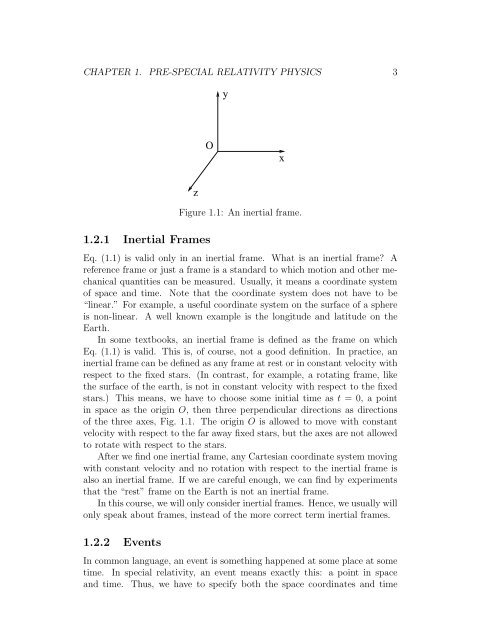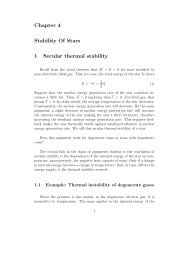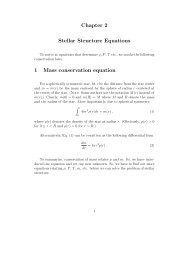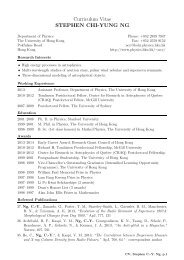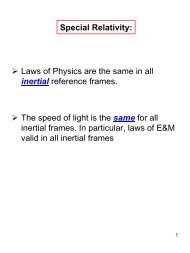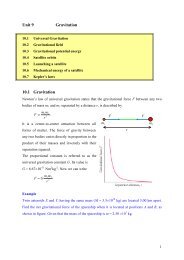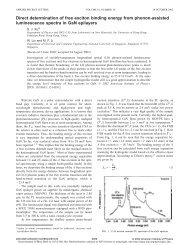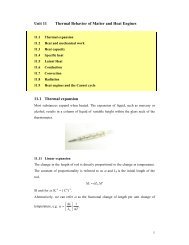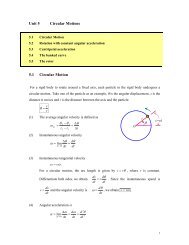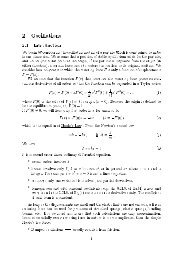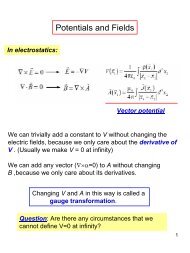here - Department of Physics, HKU
here - Department of Physics, HKU
here - Department of Physics, HKU
Create successful ePaper yourself
Turn your PDF publications into a flip-book with our unique Google optimized e-Paper software.
CHAPTER 1. PRE-SPECIAL RELATIVITY PHYSICS 3<br />
y<br />
O<br />
x<br />
1.2.1 Inertial Frames<br />
z<br />
Figure 1.1: An inertial frame.<br />
Eq. (1.1) is valid only in an inertial frame. What is an inertial frame? A<br />
reference frame or just a frame is a standard to which motion and other mechanical<br />
quantities can be measured. Usually, it means a coordinate system<br />
<strong>of</strong> space and time. Note that the coordinate system does not have to be<br />
“linear.” For example, a useful coordinate system on the surface <strong>of</strong> a sp<strong>here</strong><br />
is non-linear. A well known example is the longitude and latitude on the<br />
Earth.<br />
In some textbooks, an inertial frame is defined as the frame on which<br />
Eq. (1.1) is valid. This is, <strong>of</strong> course, not a good definition. In practice, an<br />
inertial frame can be defined as any frame at rest or in constant velocity with<br />
respect to the fixed stars. (In contrast, for example, a rotating frame, like<br />
the surface <strong>of</strong> the earth, is not in constant velocity with respect to the fixed<br />
stars.) This means, we have to choose some initial time as t = 0, a point<br />
in space as the origin O, then three perpendicular directions as directions<br />
<strong>of</strong> the three axes, Fig. 1.1. The origin O is allowed to move with constant<br />
velocity with respect to the far away fixed stars, but the axes are not allowed<br />
to rotate with respect to the stars.<br />
After we find one inertial frame, any Cartesian coordinate system moving<br />
with constant velocity and no rotation with respect to the inertial frame is<br />
also an inertial frame. If we are careful enough, we can find by experiments<br />
that the “rest” frame on the Earth is not an inertial frame.<br />
In this course, we will only consider inertial frames. Hence, we usually will<br />
only speak about frames, instead <strong>of</strong> the more correct term inertial frames.<br />
1.2.2 Events<br />
In common language, an event is something happened at some place at some<br />
time. In special relativity, an event means exactly this: a point in space<br />
and time. Thus, we have to specify both the space coordinates and time


